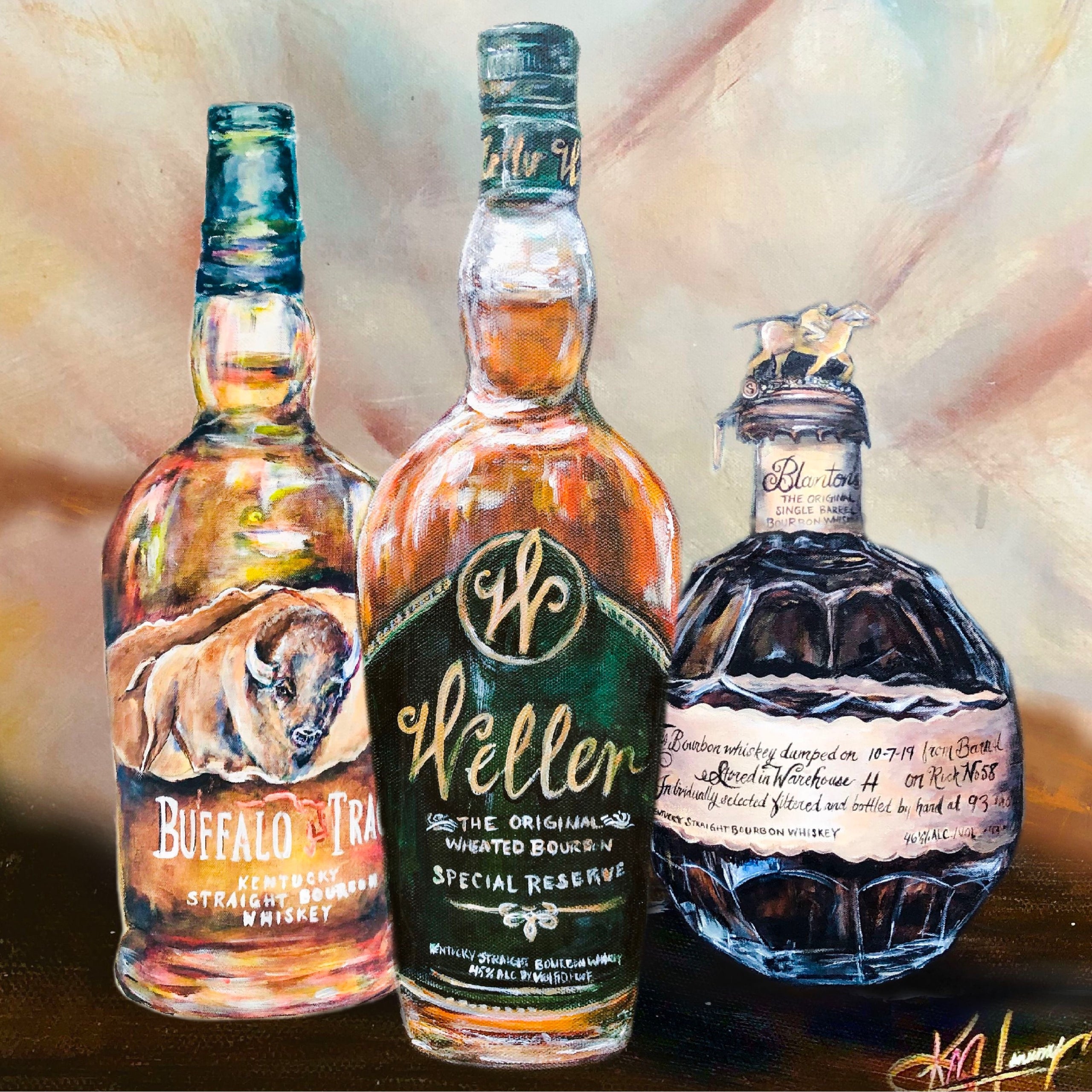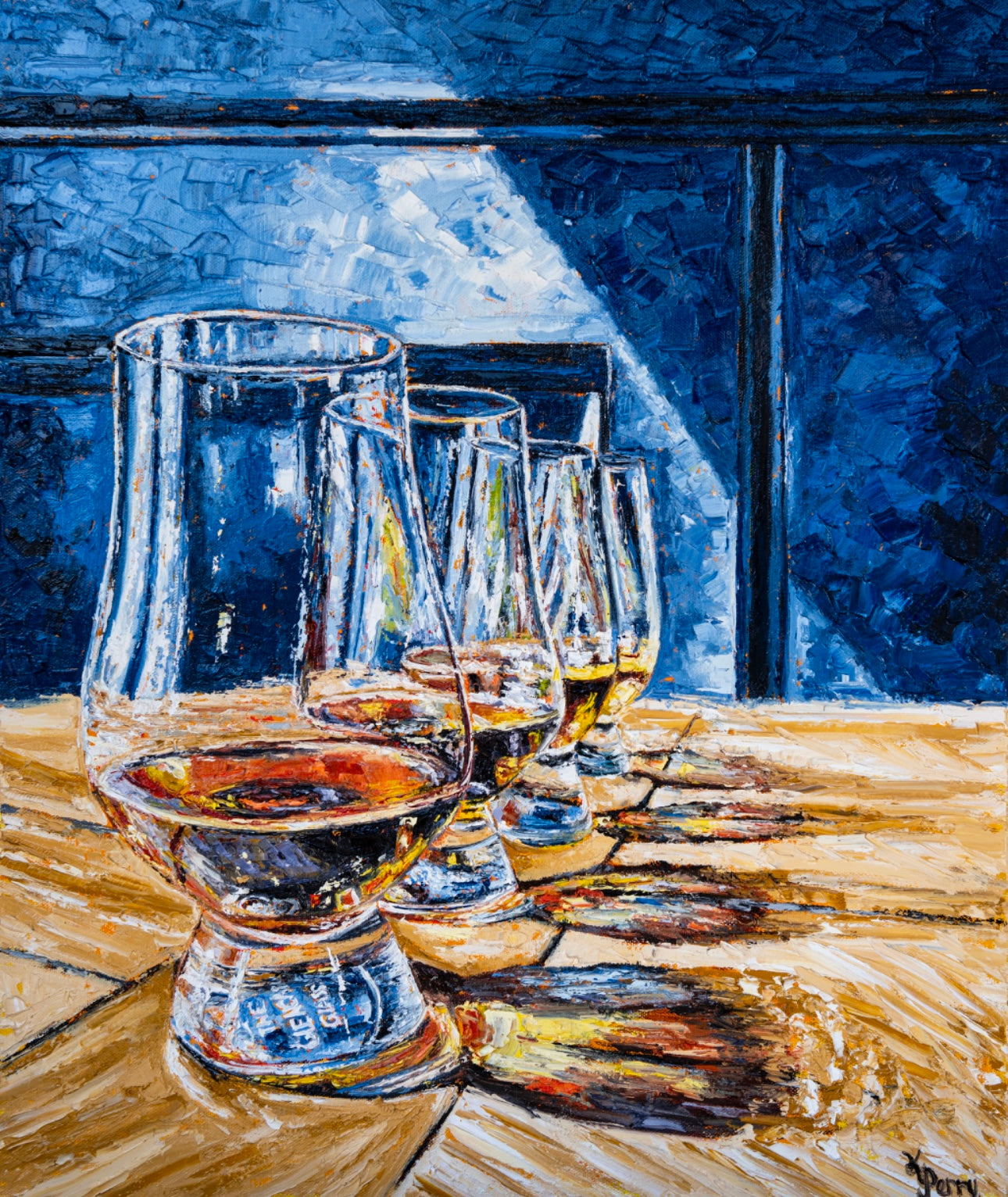Whiskey Art: Catching the Essence of Distillation in Every Brushstroke
Whiskey Art: Catching the Essence of Distillation in Every Brushstroke
Blog Article
The Relevance of Whiskey Art in Celebrating Heritage and Workmanship in the Beverage Industry
The detailed partnership between scotch art and the party of heritage and workmanship within the beverage industry can not be overemphasized. Via attentively made labels and bottles, scotch brand names envelop their historic roots and the artisanal skills that define their production techniques.
The Historic Roots of Whiskey
At the heart of whiskey's attraction lies an abundant tapestry of historical origins that trace back to old human beings. The origins of scotch can be linked to the purification methods of the Sumerians and Babylonians around 2000 BCE, where very early kinds of fermented grain drinks started to arise. It was in the Middle Ages that the art of distillation advanced considerably, specifically in Ireland and Scotland, leading to the development of bourbon as we know it today.
The term "scotch" itself originates from the Gaelic word "uisce beatha," indicating "water of life." This expression highlights the cultural relevance of scotch in Celtic societies, where it was commonly related to rituals, celebrations, and communal bonding. By the 15th century, purification ended up being a recognized craft within monastic areas, leading the way for the facility of legal distilleries.
As trade routes broadened, scotch's appeal grew, transcending local boundaries and capturing the interest of lovers worldwide. Realism Art. This historical trip reflects not just the craftsmanship behind scotch production however additionally its important function in social and social contexts, marking it as a significant beverage throughout history
Artistic Expression in Branding
Bourbon branding stands as an engaging intersection of creativity and commerce, where visual identity plays a vital duty in forming customer understanding. The looks of bourbon labels, packaging, and marketing materials reflect not only the brand name's tale however likewise its core values and heritage. With imaginative expression, distilleries convey a story that reverberates with customers, evoking feelings and sparking links.
Making use of shade, typography, and images in branding offers to differentiate items in a saturated market. Conventional themes might stimulate a sense of authenticity and workmanship, while contemporary styles can symbolize technology and forward-thinking. This calculated artistic direction boosts brand acknowledgment and loyalty, permitting customers to build a personal relationship with the whiskey they pick.
Additionally, imaginative expression in branding commonly serves as a party of local heritage. Distilleries frequently integrate neighborhood icons or historical recommendations into their designs, developing a sense of place that welcomes consumers to take part in a wider social experience. Inevitably, the virtuosity behind scotch branding not just boosts visual appeal yet also improves the general story of the brand name, fostering a much deeper recognition for the workmanship and heritage ingrained in each container.
Craftsmanship in Container Layout
The artistry obvious in whiskey branding prolongs past visual identification to incorporate the craftsmanship included in container design. Each bottle acts as a vessel not just for the spirit within, however also for the tale it outlines its origin, tradition, and top quality. The design procedure needs thorough attention to information, as elements such as material, shape, and closure contribute considerably to the general understanding of the bourbon.
Craftsmanship in container layout includes choosing top notch glass that can boost the scotch's color and clarity, while additionally offering a tactile experience for the consumer. The silhouette of the container have to be both cosmetically appealing and functional, frequently reflecting the heritage of the brand. Lots of distilleries choose one-of-a-kind shapes or printed logo designs that evoke a feeling of authenticity and background.
Moreover, the tag design and typography play an essential duty in connecting the brand's narrative. Bourbon Art. A well-crafted bottle not only captivates the consumer's eye yet additionally navigate here reinforces the brand moved here name's dedication to high quality and practice. In this means, the craftsmanship of bottle design ends up being a vital aspect of the whiskey experience, merging creativity with an extensive respect for heritage
Social Importance of Bourbon Art
Celebrating practice and craftsmanship, the social importance of scotch art goes beyond simple looks, linking with the historical and social stories of the areas where it comes from. Each container serves as a canvas, portraying the one-of-a-kind tales, mythology, and practices that have formed neighborhood whiskey-making practices. The complex layouts often show the heritage of the distillers, integrating symbols and themes that reverberate with the society and values of their neighborhoods.

Furthermore, scotch art plays a crucial role in communal events and parties, working as a concrete web link between people and their shared experiences. By valuing the artistry in scotch packaging, consumers cultivate a deeper understanding and regard for the craft, ultimately improving their satisfaction of the beverage itself.
Modern Trends in Whiskey Discussion
Recently, the discussion of bourbon has actually progressed to show contemporary tastes and trends while still honoring typical craftsmanship - Limited Edition. additional reading Distilleries are increasingly concentrating on aesthetic elements that boost the general alcohol consumption experience, bridging the space in between heritage and modernity
Ingenious container layouts have actually emerged, frequently including sustainable products and imaginative tags that inform compelling stories. Lots of brands now work together with neighborhood artists, instilling their items with unique visual expressions that reverberate with consumers. Furthermore, limited-edition launches are typically packaged in collectible containers, adding value and charm for lovers.

Final Thought
Finally, scotch art acts as a crucial avenue for expressing the heritage and workmanship intrinsic in the beverage market. Through elaborate branding, cutting-edge bottle designs, and culturally significant creative elements, bourbon brand names effectively honor their practices and connect with customers. This imaginative narrative not only boosts the recognition of whiskey however additionally strengthens area identity and pride among producers. Inevitably, whiskey art plays an important function in preserving and commemorating the abundant social tapestry of whiskey-making.


Craftsmanship in container design includes choosing premium glass that can enhance the bourbon's color and clarity, while also providing a tactile experience for the customer. In this means, the craftsmanship of container style ends up being a vital element of the bourbon experience, combining virtuosity with a profound respect for heritage.
In verdict, scotch art serves as a crucial avenue for expressing the heritage and workmanship intrinsic in the beverage sector.
Report this page